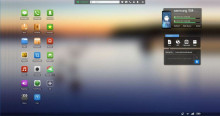The flowering of voice control leads to a crop of security holes
'Tis the season of cybersecurity threat predictions for 2017. Vendors' glossy reports shower onto the desks of customers and journalists like gentle Christmas snow. But so many of these reports, like so many snowfalls, are nothing but slush.
All year we've been hearing about the spreading plague of ransomware, and how the Internet of Things (IoT) will be a security nightmare. Remember the botnet made of video cameras? Vendors have been waving around phrases like "artificial intelligence" and "machine learning" and "threat intelligence sharing" like magic wands.







































































